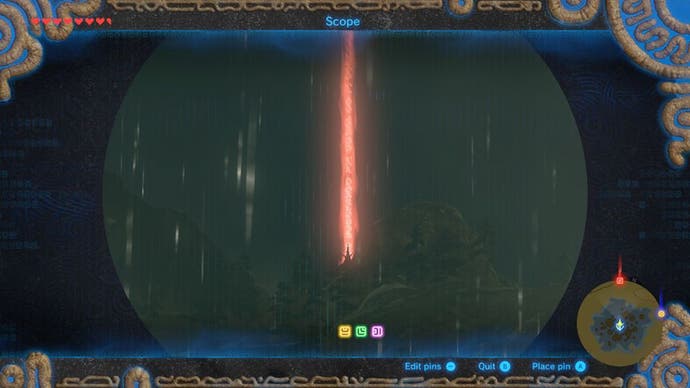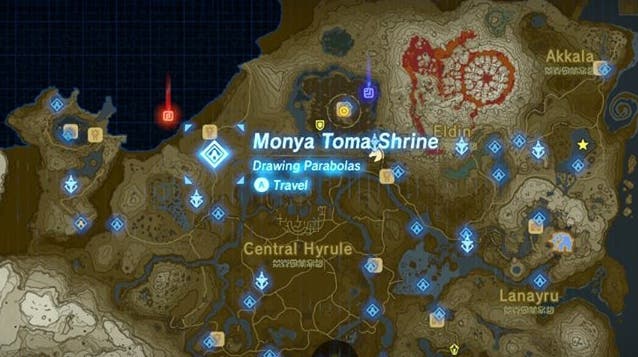One of Breath of the Wild's most modest features is also one of its best
Five good reasons.
Breath of the Wild, which I'm finally starting to properly play at the moment, is a game that's filled with clever ideas and neat little bits of business. But as I zero in on my first 20 hours, one of the things that's standing out as being particularly ingenious is the manner in which you mark things down on the map screen. Breath of the Wild's pins are properly brilliant.
This is not the first Zelda game in which you can mess about with the map in interesting ways. I think I remember scribbling notes on the map with a stylus in one of the DS games. That was great, of course, but the stylus was not an enormously precise beast, and, coupled with my poor penmanship, the maps looked so ugly covered in my stupid notes that I generally wiped them off in shame as soon as I could. Breath of the Wild's solution is much simpler. You have five pins, each one a different colour, that you can sink into the map in points of interest. Then, when you're in first person mode and looking about, the pins will show up as huge shafts of colour right there in the landscape itself.
The magic here, I am increasingly inclined to think, is that there are only five pins. After you've used them up you can resort to stamps, of course, but stamps are not as colourful or as useful as pins - they do not show up in first-person mode, as far as I can tell. You can use up to 100 of them, and they strike me as being best used for spots that you come back to regularly: here is where I can cash in the orbs I get from shrines, for example, or here is a good spot for horses.
Those pins, though, those pins are used for things you should check out as soon as possible. For the first few hours of the game I used them to mark down the towers I should be climbing to unlock the map. After that, I've been using them for shrines. There are 120 shrines in the game, apparently, and there are five pins. That should be frustrating. It's not. It's amazing.

And the reason for this is that just having five pins makes an unimaginably vast game manageable. It tells you that you can focus on these five things, and that you'd better get them done before you head on to other distractions. Games like Zelda, and Dark Souls to a certain extent, games which are either vast or have incredible depth and richness, these games often feel like you are moving a lens over their surface - the lens of your attention. And the greatest threat to your attention, and to the fun that you're having, is being overwhelmed by choice and by the sheer amount of possible distractions. Suddenly the game disappears in trails and rabbit holes and in the opportunity cost of pursuing one promising thing instead of all the other promising things. Having just five pins, though, allows you to set expectations on yourself. I have five things I currently want to do, and once those are done, I can focus on doing another five things.
Modern open-world games are often about playing the map as much as the game, I think: working out where to go and how to get there in an optimal way that gets you past the spots where you want to gather resources or level as quickly as possible. Breath of the Wild understands all this, and also seems to understand human fallibility and the ease with which we lose ourselves and panic ourselves and forget to have fun. When I play Breath of the Wild, I feel like I'm playing those pins as much as anything else. I'm choosing where to go and what to prioritise within limits that the game is secretly, silently setting for me. Freedom within astute restrictions. If that isn't Nintendo's kind of thinking, I don't know what is.









